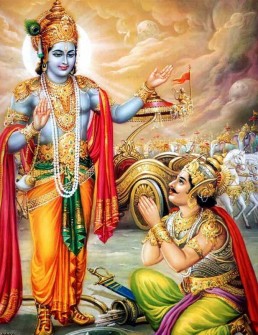The two paths so vividly described above, are renamed here as the ‘Path-of-Light’ and the ‘Path-of-Darkness,’ according to the goal to which each “path” leads the pilgrims. One takes the travellers to the brilliant heights of evolutionary success; the other into the dark abyss of devolutionary sorrow. These two “paths” described here, in their general implications, can be considered as showing the ‘Path-of-Moksha’ and the ‘Path-of-Samsara.’
The ways of life in any given generation always fall under two categories — the secular and the sacred. The former, the secular, is pursued by those who feel that food, clothing and shelter are the absolutes and the fulfilment of life lies in the satisfaction of the largest number of physical and emotional sense-ticklers, and whose intellects are cold and satisfied, feeling no urge to seek anything nobler and diviner. The latter, the sacred, however, is pursued by those who can feel no encouragement in their bosom, when the sense-objects giggle and dance in front of their sense-organs, and whose intellects are ever on fire with a great seeking of something beyond, something deeper than the mere surface existence in life.
These two ‘paths’ — which mean not only the two impulses of the sacred and the secular, but also all those who follow these two paths — the seekers of materialism and the seekers of spirituality — “ARE TO BE CONSIDERED AS TRULY ETERNAL.” In the largest sense of the term, these two impulses together constitute the entire Samsara, and since the world of finitude and change is eternal, these two contrary impulses are also eternal. But it is the Vedantic theory, approved and upheld by the lived experiences of the Seers and Sages, that Samsara for the individual can be ended.
Subjectively considered, this stanza may perhaps have a secret suggestion to make to true Yogis — meaning, the sincere meditators. Even in an elderly Sadhaka, who has been on the ‘path’ for years, the existing vasanas in him may now and then come up to insist upon his extroversion. At such moments of inner revolt in us, we, as seekers and meditators, need not at all get flabbergasted because, as the Lord explains, the aspirations for the higher-life and the temptations for the lower-existence are the two opposing forces that are eternally at tug-of-war with each other.
WHAT EXACTLY IS THE GAIN IN KNOWING THESE TWO PATHS, AND THEIR ETERNAL NATURE?

